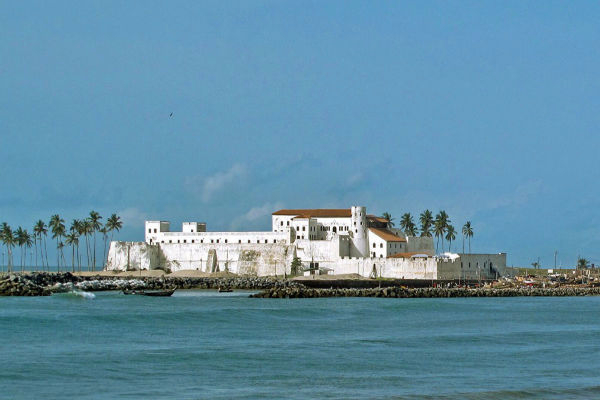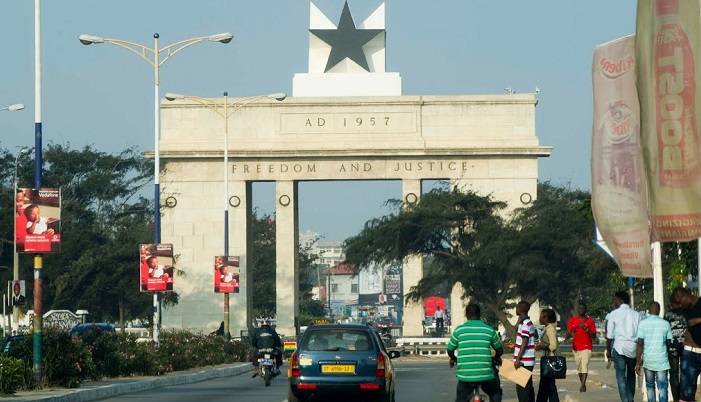The Greater Accra Region has the smallest area of Ghana's 16 administrative regions, occupying a total land surface of 3,245 square kilometres.
This is 1.4 per cent of the total land area of Ghana.It is the second most populated region, after the Ashanti Region, with a population of 4,010,054 in 2010, accounting for 16.3 per cent of Ghana's total population.
In 1960, Greater Accra then referred to as Accra Capital District, was geographically part of the Eastern Region. It was, however, administered separately by the Minister responsible for local government.
With effect from 23 July 1982, Greater Accra was created by the Greater Accra Region Law (PNDCL 26) as a legally separate region.
The Greater Accra Region is bordered on the north by the Eastern Region, on the east by the Volta Region, on the south by the Gulf of Guinea, and on the west by the Central Region.
The Ga people celebrate the Homowo festival, which literally means "hooting at hunger." This festival originated several centuries ago. It is celebrated in remembrance of a great famine that hit the Ga people in the sixteenth century. It is mainly a food festival which celebrates the passing of that terrible period in Ga history. It takes place in August every year and is celebrated by all the Ga clans.
The Adangbe people from Ada celebrate the Asafotu festival, which is also called 'Asafotufiam', an annual warrior's festival celebrated by Ada people from the last Thursday of July to the first weekend of August commemorates the victories of the warriors in battle and is a memorial for those who fell on the battlefield.
The festival also coincides with the harvest cycle, when these special customs and ceremonies are performed. These include purification ceremonies. The celebration reaches its climax with a durbar of chiefs, a colourful procession of the Chiefs in palanquins with their retinue.
READ ALSO:
8 tourist sites in Ghana you should definitely visit
Cities in Ghana and what they are known for
They are accompanied by traditional military groups called 'Asafo Companies' amidst drumming, singing and dancing through the streets and on the durbar grounds. At the durbar, greetings are exchanged between the chiefs, libations are poured and declarations of allegiance are made. The Ga sub-group of the Ga-Dangme people is the historical population of Accra. They form the largest ethnic sub-group in the Greater Accra Region, with 18.9% of the population. The Ga people were organized into six independent towns (Accra (Ga Mashie), Osu, La, Teshie, Nungua, and Tema). Each town had a stool, which served as the central object of Ga ritual and war magic.
Accra became the most prominent Ga-Dangme town and is now the heartbeat and capital of Ghana. The Ga people were originally farmers, but today fishing and trading in imported goods are the principal occupations.Â
The Adangme people occupy the coastal area of Ghana from Kpone to Ada, on the Volta River and South Atlantic Ocean along the Gulf of Guinea and inland along the Volta River. The Adangme People include the Ada, Kpong, Krobo, Ningo, Osudoku, Prampram, and Shai, all speaking Adangbe of the Kwa branch of the Niger-Congo family of languages.
The Adangme People have the largest Population among the two related Ga-Adangme People. About 70% of the Greater Accra Regional Land is owned by the Adangmes located in Dangme East and Dangme West Districts of Ghana.
Some recreational centres in the region include the National Museum, La Pleasure Beach, Kokrobite Beach, Coco Beach Resort,Cocoloco Beach, Korle Beach Resort, Next Door Beach Resort, Manet Paradise, Ada Paradise Beach, Labadi Beach, Titanic beach among others.
Also, some National historic sites include the Kwame Nkrumah Mausoleum and Osu Castle.

Osu Castle
Ghana News: Latest news in Ghana
Â
Â





